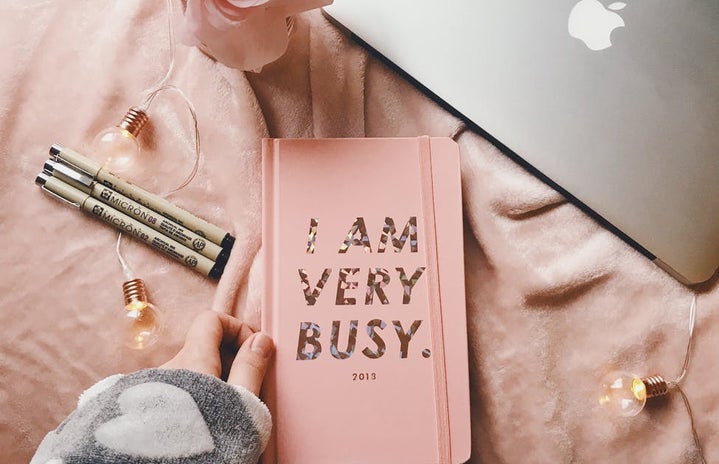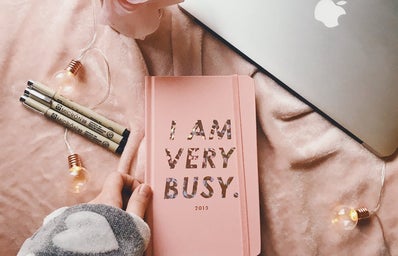Upon first glance at the vast community of productive students online with perfectly color-coded notes and beautifully organized planners, starting a bullet journal may seem like an intimidating task that could even be a waste of precious study time. However, I have found bullet journalling to be an effective way of keeping myself on track as well as releasing stress as I check off tasks and draw out calendars. The key is personalizing it, your bullet journal should function how you need it to. Don’t like planning things out a month in advance? Skip the monthly calendars! Don’t have time to meticulously draw out the lines or add funky stickers? Skip them! Your journal is yours. Don’t let the pictures of perfect journals scare you.
Another common reason people don’t use bullet journals is because they feel there’s no reason when they can use a pre-made planner. Of course, if this works for you, stick with it! However, if you’ve ever thought to yourself “I wish my planner had a section for…” or “I have all these empty pages I don’t need…” then maybe a bullet journal might work better for you. It’s essentially a customizable planner, so you have all the sections and pages you do need, without any of the extra wasted space.
So, how do you start one? The inventor of the bullet journal, Ryder Carroll, introduced some basic principles that the majority of bullet journal users implement. However, these of course, are not mandatory. For instance, I don’t use an index, which is the first suggested page.
The index is exactly what it sounds like. Some journalers number all of their pages (or buy a pre-numbered journal). As they fill out their pages, they’ll go back and update the index page so they can keep track of what pages are where in their journal.
The next suggested page is the future log. Many journallers use this for keeping track of far-out dates within the current year. You can make a list of events under each month’s title or write out all the dates of the month and add events as they come up. You can also use this for more than the current year or skip it entirely if either of those options work better for you.
Next is the monthly log, this is used for keeping track of events, deadlines, etc. within the current month. Carroll suggests writing the dates along the left hand margin, along with a letter for the day of the week. You can separate each week by a line and then use the rest of the page to fill in information for the month.
Finally, Carroll suggests a daily log where you can write tasks and schedules. However, I favor a weekly log over a daily log as I don’t always update my journal every day.
With each of these pages, you can customize it so it works best for you. Currently, I primarily use weekly logs that have an hour-by-hour schedule as well as a daily to-do list. I write my schedule on Sunday, updating it as the week goes on and update my to-do lists daily, usually deciding on important tasks the night before and writing them into the next days list. However, I haven’t always used this layout. My weekly schedule throughout the journal has changed dramatically as my needs for it have shifted through high school and college.
Many bullet journalers also add custom pages, such as habit trackers or movie logs. Habit trackers are charts for keeping track of habits you may want to start or stop, you can fill it out each day to have a visual representation of your progress at the end of the week or month. I am a big fan of using movie logs so I can keep track of what I’ve watched each year. Since bullet journals are so customizable, you can add a page for anything you want, regardless of whether or not anyone’s done it before.
Bullet journaling has absolutely improved my life. I’m able to keep important memories by taping them in my journal alongside keeping organized with my weekly spreads. I hope this has inspired you to give bullet journaling a try, whether you become an avid bullet journaler or just try it out for a bit. Who knows, maybe you’ll find it as impactful as I have!




